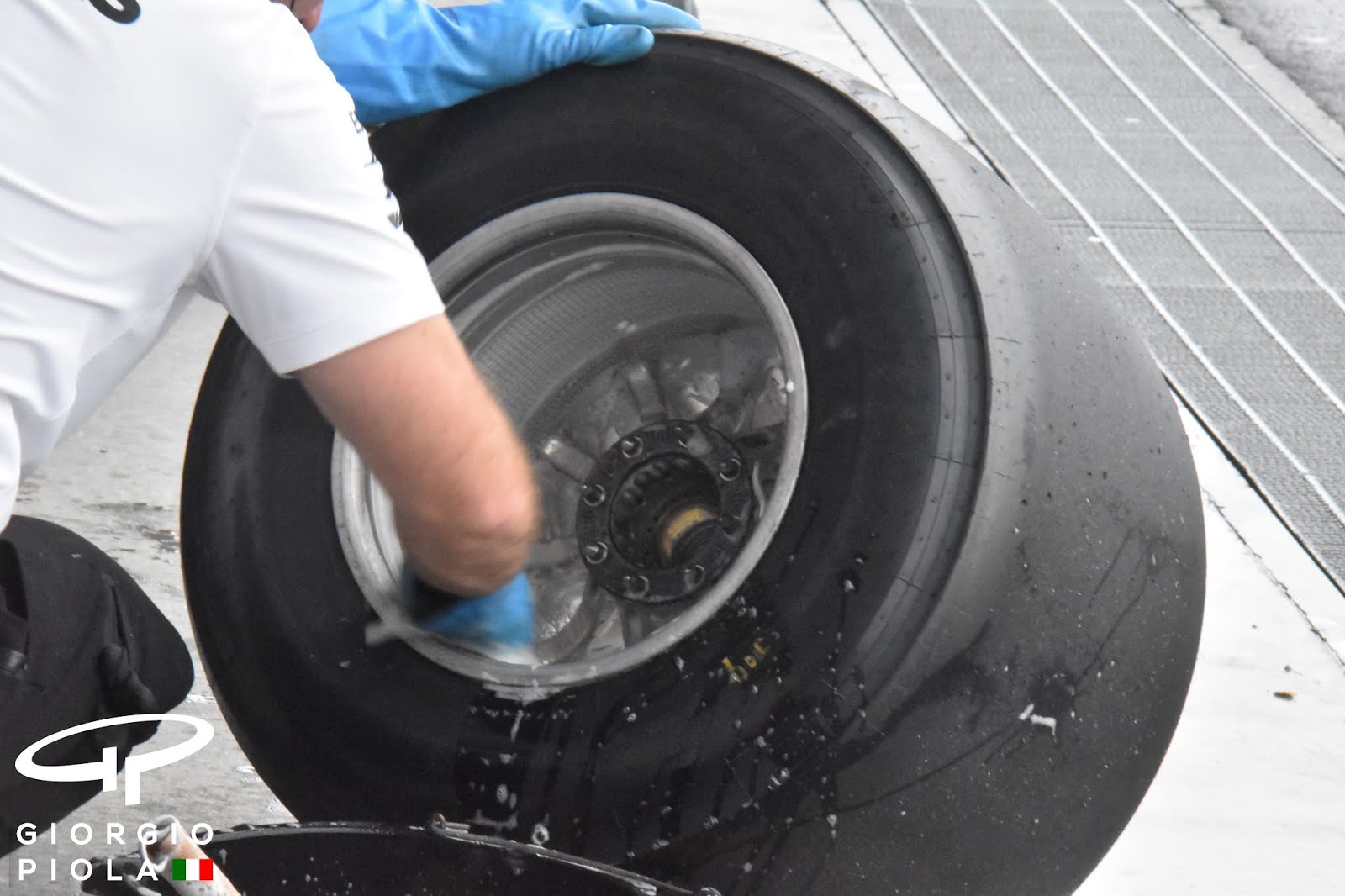So, we can all keep following what I feel is a bit of a red herring with respect to the wheels (I mean, I doubt the significance of the impact if Merc voluntarily changed them, at least with respect to the small holes). It is intriguing, I'm just not sure how vital those small holes were/are compared to the significance of the shape of the wheel drum and the rear wheel design itself.
In the meantime, we can also look at some other reasons why the Merc was "off" in the race, especially with respect to the tires.
Interesting article from AMuS:
https://www.auto-motor-und-sport.de/for ... -usa-2018/
The main points. Focusing mainly on the car/hardware-related points:
1. Hamilton started on SS, instead of US, like Kimi.
2. The tire pressure increase. "1.5 PSI tire pressure puts the car at the rear 1.5 millimeters higher. That leaves only two options to balance the car again. Either you 1) increase the front of the tire pressure or 2) modify the front wing spec. Mercedes opted for the second variant. As a result, the cars were more susceptible to traffic. Behind Brendon Hartley, Hamilton lost the crucial time on Raikkonen and Verstappen."
"The Mercedes were trimmed for too much downforce and not fast enough on the straights (e.g., Vettel's ability to easily get past Bottas at the end)."
3. The pre-race water pump replacements. "The engineers referred to their driver's statements that the cars were not evenly balanced. 'It's a possible reason for the high tire usage, but it still has to be proven.'"
When the cars were weighed post-race, one side was heavier than the other. "The shifted weight balance was perhaps the result of a major repair in the morning of the race day."
4. Hamilton's floor damage. Supposedly cost 2-3 tenths per lap.
5. Strategy.


